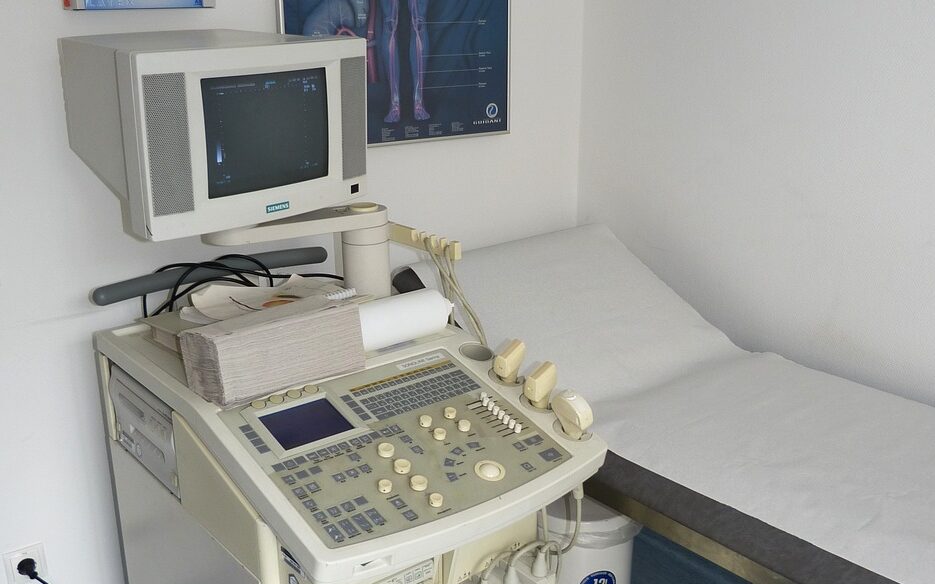By Debbie Bunch
March 26, 2024

New Ultrasound Technology May Improve Diagnosis of Respiratory Conditions
A new imaging technology called the airborne ultrasound surface motion camera (AUSMC) may be poised to revolutionize the way respiratory conditions are diagnosed.
AUSMC, which shares the physical principle of conventional ultrasound Doppler imaging without requiring a probe to be placed on the skin, can detect low-amplitude movements produced by vocalizations at the surface of the chest, thus aiding in the identification of disease-related abnormalities.
In a study conducted in 77 healthy volunteers, French researchers used the device to image surface vibrations caused by natural vocalizations to reproduce vocalization-induced vibrations on the surface of the body that are typically analyzed during a physical examination.
The vibrations were captured at high frame rates of about 1,000 images per second and
were detectable in all the participants.
“The spatial distribution of vibrational energy was found to be asymmetric to the benefit of the right size of the chest, and frequency dependent in the anteroposterior axis,” said study author Mathieu Couade. “As expected, the frequency distribution of vocalization does not overlap between men and women, with the latter being higher.”
Studies on AUSMC will continue, but the investigators believe coupling the technology with artificial intelligence could foster the development of a new thorax examination that would offer a better look into respiratory health and the diagnosis of respiratory conditions.
The study was published by AIP Advances. Read More

This Chemical May be Behind Cases of ARDS
Why do some people with severe respiratory disease develop the acute respiratory distress syndrome (ARDS) while others don’t? According to researchers publishing in the Proceedings of the National Academy of Sciences, the answer may lie in a byproduct of the immune response to viruses and bacteria called lysolipids.
When this chemical is increased in the lungs, it can replace the lung surfactant in the cells, leading to uneven lung inflation, and eventually respiratory distress.
“This study looked into the correlation of the concentration of the lysolipid in the lungs,” said lead researcher Joseph Zasadzinski, from the University of Minnesota. ”Once that fluid reached a certain level, it started to cause severe impacts.”
The authors note this process is hard to reverse once it has begun and adults, unlike newborns, cannot be treated by simply adding more surfactant because, in the case of adults, the amount of lysolipid determines the outcome of the surfactant in the lungs, not the breakdown of the existing lung surfactant itself.
Their research did, however, show that lysolipid levels are affected by frequency dependence, defined as how quickly a person opens and closes the lungs, and they believe that could help clinicians tailor the treatment process for specific patients.
The investigators plan to conduct more studies aimed at discovering whether specific molecules can be manipulated to make them less active or less likely to stick to a specific place, with the goal being to cause the concentration of lysolipids to drop to a level that would reverse the symptoms of ARDS. Read More

Weight-Based HFNC Protocols May Help Prevent ICU Admissions in Young Kids
If you work in a children’s hospital, there is a good chance you now follow weight-based high-flow nasal cannula (HFNC) protocols for kids being treated outside of the ICU. But do these protocols really make a difference when it comes to ensuring children remain outside of the ICU?
Researchers from Utah and Ohio who examined ICU admission rates among more than 86,000 children 24 months old or younger who were treated for bronchiolitis in 18 children’s hospitals across the country between 2010 and 2021 have found they do.
In ten of the hospitals, HFNC use was restricted to the ICU. The other eight hospitals had transitioned from using HFNC only in the ICU to weight-based HFNC protocols that allowed its use in non-ICU wards as well. The investigators found hospital transition to a weight-based HFNC protocol resulted in a 6.1% decrease per year in ICU admissions and a 1.5% decrease per year in the use of noninvasive positive pressure ventilation when compared to the ICU-only hospitals.
No differences in mean length of stay or the proportion of patients who ended up requiring invasive mechanical ventilation were seen in the study.
The authors note previous studies on weight-based protocols in children with bronchiolitis were not powered to measure a difference in ICU admission and believe their study, “starts to fill this gap in evidence, suggesting that weight-based protocols may be effective in reducing ICU use for children hospitalized with bronchiolitis.”
The study was published by JAMA Network Open. Read More








